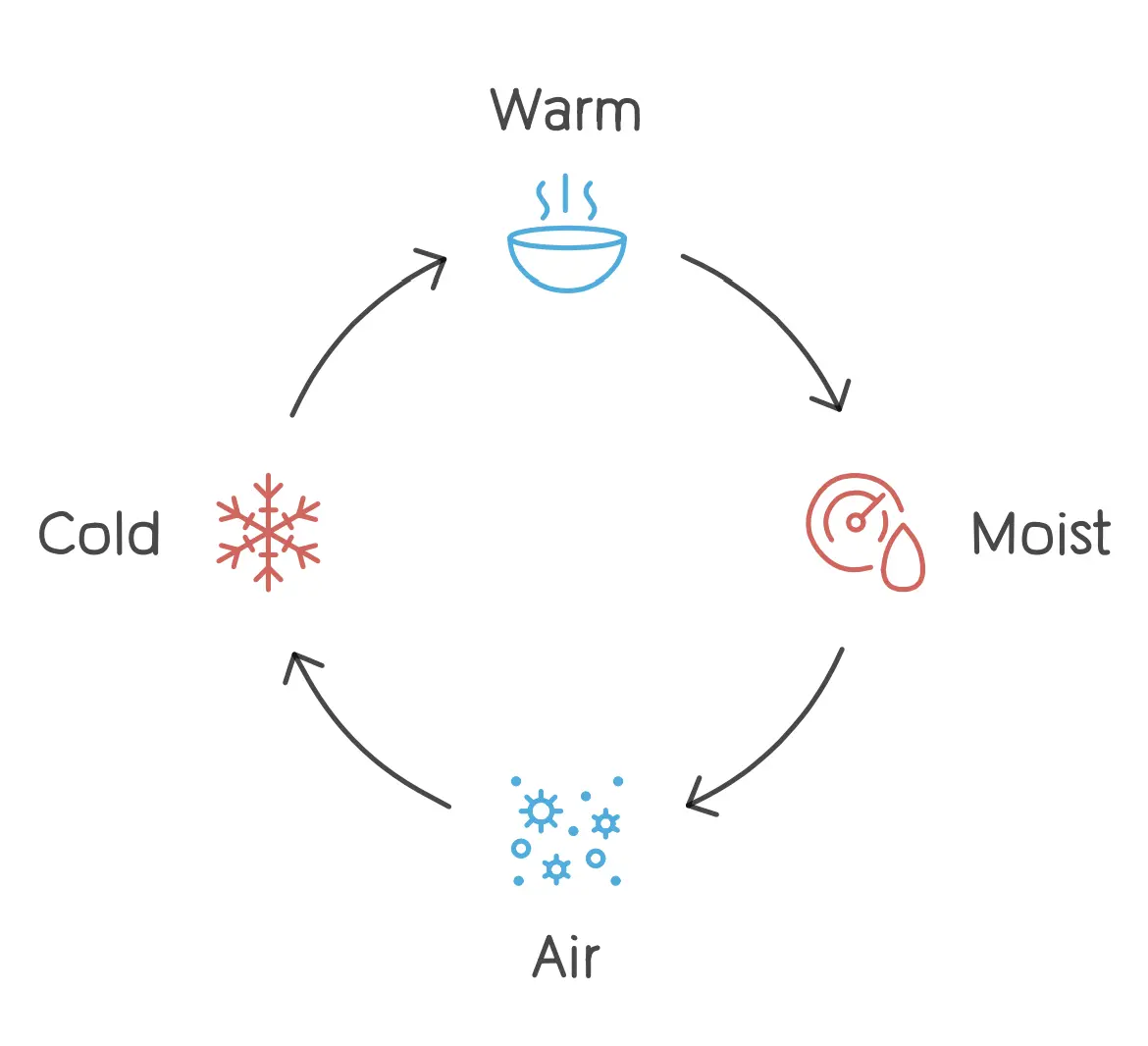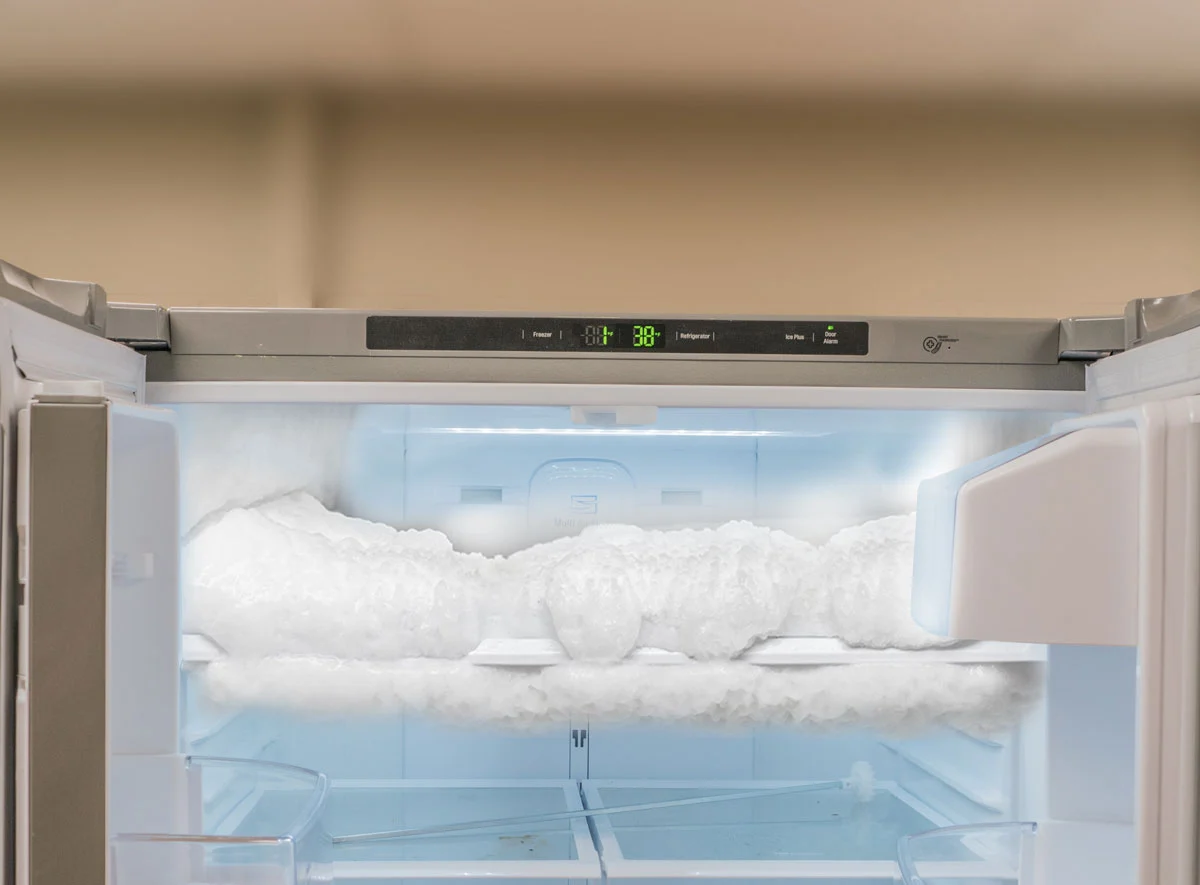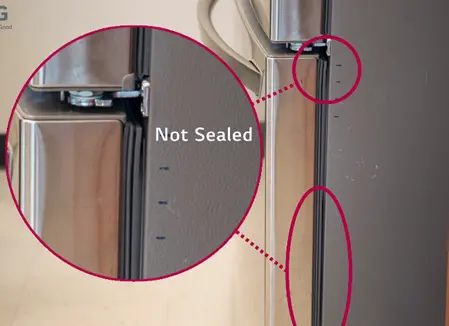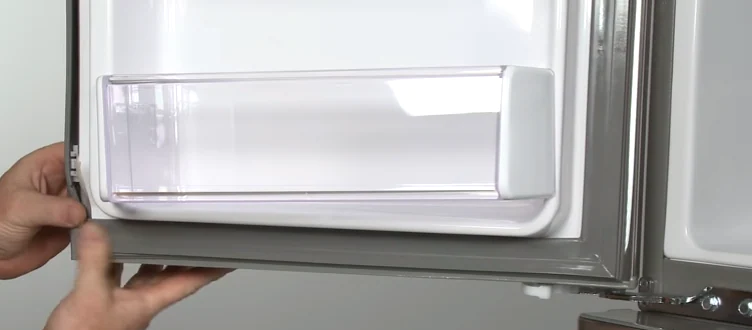is that pesky frost monster invading your LG fridge? Don’t chuck those groceries just yet! I have all the hot tips to return that baby to its sparkling, frosty-free glory.
Let me share some unique tricks to outsmart that ice and keep your food fresher longer. Get ready to conquer those icy patches like a true fridge boss!
Forget all that frustration and pricey repair nonsense! This guide will empower you to banish that frost buildup from your LG fridge for good.
You’ll learn simple solutions to prevent them frosty nightmares from ever happening again. Your fridge will be running smooth as butter. Let’s get into it!
what exactly is this icy intruder?

Frost build-up is essentially the formation of tiny ice crystals within your refrigerator.
It happens when warm, moist air enters the cool compartment and meets the cold surfaces.
Think of it like a microscopic game of tag gone wrong, where water vapour chases after cold air, eventually condensing and freezing into frost.
Why does it seem to favour LG refrigerators specifically?
survey over at Wirecutter, you know those appliance review people, and it turns out LG fridges make their owners happier than most. some people have complaints, but whatever brand doesn’t, right? But here’s the thing, LG’s got all these fancy features and top-of-the-line models that people just rave about. That’s why so many people end up going with LG, makes sense!
While frost build-up can occur in any brand, certain factors might make LG models more susceptible:
- Door design: Some LG models have door seals more prone to wear and tear, allowing moisture to sneak in.
- Defrost system: If the defrost timer, thermostat, or drain line malfunctions, frost can accumulate unchecked.
- Usage habits: Frequent door openings, warm food storage, and spills can contribute to excess moisture in any refrigerator, including LGs.
But why should you care about this frosty foe?
Unchecked frost build-up isn’t just an eyesore. It can:
- Reduce efficiency: Frost acts like an insulator, forcing your refrigerator to work harder to maintain the desired temperature, leading to higher energy bills.
- Block airflow: Thick frost can impede proper air circulation, affecting food preservation and potentially leading to spoilage.
- Damage your appliance: Excessive ice buildup can strain the defrost system and other components, shortening your refrigerator’s lifespan.
Why Your LG Refrigerator Might Be Frosty
Have you ever noticed a frosty wonderland taking over your LG refrigerator? Don’t panic, it’s a common sight, but it’s not welcome.
Let’s delve into the mysteries behind this icy buildup and identify the culprits causing this chilly chaos.
Moisture Mayhem:
- Door Drama: Every peek inside lets in a wave of warm, moist air. The more frequent and extended these visits are, the more moisture has a chance to mingle with the cool air inside, leading to frost formation. Think of it like inviting uninvited guests who leave behind damp towels!
- Food Faux Pas: Uncovered or unsealed food acts like tiny humidifiers, constantly releasing moisture into the air. Imagine bowls of soup or plates of fruit evaporating, adding to the frosty mix.
- Spill the Tea (Not Literally!): Accidents happen, but spills and leaks left unattended become breeding grounds for frost. Think of them as moisture puddles that the cold air eagerly grabs onto, solidifying into icy patches.
Door Seal Dilemmas:
- Gasket Gone Rogue: The door seal, that trusty barrier between your food and the outside world, can wear out over time. This creates tiny gaps that welcome unwanted moisture, like a leaky window on a winter day.
- Misaligned Mischief: Even a slight misalignment of the door can throw off the seal, allowing sneaky moisture to infiltrate your fridge’s ecosystem. Imagine a door that doesn’t close quite right, letting in a draft of cold, damp air.
Defrost System Dysfunction:
- Timer Trouble: The defrost timer is responsible for initiating the thawing cycle that melts frost buildup. If it malfunctions, the frost just keeps accumulating, like an uninvited guest who overstays their welcome.
- Thermostat Tantrum: The thermostat regulates the temperature inside your fridge. If it goes haywire, the fridge might get too cold, causing excessive frost formation. Think of it like the thermostat being stuck on “Arctic Blast,” leading to an icy takeover.
- Drainage Drama: The defrost cycle channels melted frost through a drain line. If this line gets clogged, the water has nowhere to go, refreezing as ice and adding to the frosty mess. Imagine a blocked drain causing a bathtub to overflow, creating an icy situation in your fridge.
- Evaporator Fan Blues: This fan circulates air within the fridge, preventing frost buildup. If it gets blocked by frost or debris, the air stagnates, creating the perfect environment for more frost to form. Think of it like a fan not working in a humid room, leading to condensation on the windows.
Remember: Early detection is key! By addressing these potential causes promptly, you can keep your LG refrigerator frost-free and your food happy and safe.
Fast Fact: Did you know that leaving the door open for just 30 seconds can increase the humidity inside your fridge by 50%? So be mindful of those fridge raids!
Solutions to LG refrigerator frost build up

Let’s face it, frosty buildup in your LG refrigerator is like finding an uninvited guest who chills out a little too much.
But fear not, brave defrost warrior! Here’s your battle plan to banish the icy intruder and restore order to your fridge kingdom:
Minimize Moisture Exposure
- Minimize Door Duty: Think quick fridge raids over leisurely marathons. The less you open the door, the less warm, moist air sneaks in to wreak havoc.
- Seal the Deal: Ensure snug door closure. Check the gasket for tears or wear, and replace it if needed. A good seal is your first line of defence!
- Wrap it Up, Tight! Don’t let uncovered food become evaporation stations. Use airtight containers or plastic wrap to keep moisture where it belongs.
- Spills? Act Fast! Accidents happen, but don’t let them turn into icebergs. Clean up spills promptly to prevent moisture from lingering and causing trouble.
Check Door Seal for Damage

Your door seal is like your refrigerator’s moat, keeping the frosty enemy at bay. Here’s how to ensure it’s in top shape:
- Give it the Once-Over: Regularly inspect the gasket for any tears, cracks, or deformations. A damaged seal is a recipe for frost build-up.
- Renew the Barrier: If your gasket shows signs of wear, don’t hesitate to replace it. A fresh seal is a happy seal (and a happy fridge!).
- Alignment is Key: Make sure the door closes evenly and forms a complete seal all around. Minor adjustments might be necessary to ensure a snug fit.

Review Manual for Troubleshooting
Sometimes, even the best preventative measures can’t stop frost in its tracks. If your defrost system malfunctions, it’s time to call in the reinforcements:
- Consult the Manual: Your user manual is your guide to troubleshooting common defrost issues. It might be a simple fix you can handle yourself!
- Seek Expert Help: If the problem persists, don’t hesitate to contact LG customer service. They have the expertise to diagnose and resolve any complex defrost system issues.
Bonus Tip: Remember, prevention is always better than cure! Maintain proper temperature settings (37°F for the fridge, 0°F for the freezer), avoid overloading your fridge, and defrost manually if necessary according to your user manual. With these steps, you can keep your LG refrigerator frost-free and running smoothly.
Pro Tips for Your LG Refrigerator Frost Build up
We’ve covered the essential steps to tackle frost build-up in your LG refrigerator, but true mastery lies in the details.
Let’s delve into some expert tips that maximize its performance and keep frost at bay for good:
1. Dial in the Temperature
Think of your refrigerator as a cool haven for groceries. Aim for a sweet spot of 37°F (3°C) for the refrigerator and 0°F (-18°C) for the freezer.
This golden ratio ensures optimal food preservation while minimizing energy consumption and the likelihood of frost formation.
How to Calibrate the Thermometer if the Fridge Temperature is Inaccurate?
Let’s see what it says now… Uh oh, not lookin’ good. Gotta fix this dial thing.
First, take off the plastic cover so I can see the pointer.
Alright, next, I need some ice water. Fill a cup with ice and water, mix it up for a bit, gotta make sure all the ice is melting well.
Now the tricky part, stick the pointy end of the thermometer right in the middle of the ice water.
Should be reading 32°F, that’s like… fridge heaven, right?
If it’s way off, gotta turn this little wheel here until it matches. Clockwise for colder, counter-clockwise for warmer, easy peasy.
For those fancy digital thermometers, well, most of the steps are the same. Ice water bath, check.
Reading wonky? Hold that reset button or turn that tiny screw until it shows 32°F.
Right tight for colder, lefty loosey for warmer, got it? Now my fridge will be nice and chilly, just the way I like it!
2. Space Out, Don’t Crowd Out
Imagine air as the invisible hero, circulating freely to maintain even temperatures. When you overload your refrigerator, it traps air, hindering its ability to do its job.
Space out your groceries, allowing air to flow seamlessly and preventing frost from accumulating in hidden corners.
3. Defrost Like a Pro (When Necessary)
LG refrigerators are designed for automatic defrosting, but sometimes, a manual intervention might be needed.
Consult your user manual for specific instructions, but generally, you’ll want to empty the refrigerator, unplug it, and leave the doors open for a few hours to allow the frost to melt naturally.
Never use sharp objects or harsh chemicals, as they can damage the delicate interior.
Bonus Tip: Embrace the Power of Cleanliness
Food spills, crumbs, and condensation can contribute to frost build-up.
Regularly wipe down the interior with a damp cloth and mild detergent, paying special attention to areas around the door seals.
This simple practice goes a long way in maintaining a clean and frost-free environment for your food.
LG says clean fridge inner parts with soft spongey thing and mild soap, no scratchy stuff! For shiny stainless steel outside, use special cleaner and follow instructions. Clean fridge often to avoid stinky smells and keep it working good.
LG fridge be smart, defrost itself every few hours so you usually don’t gotta do anything. But if it needs a hand defrosting, follow LG’s instructions.
Careful with those crisper drawers and shelves! Don’t wash them in dishwasher or they might get all messed up. Just wipe them down with soft cloth and mild soap after they get to room temperature.
Conclusion
Frost buildup is caused by moist air entering the refrigerator and freezing on cold surfaces. To prevent frost buildup, you should minimize how often you open the door, keep food wrapped or covered, and clean up spills promptly.
You should also check the door seal for damage and make sure the refrigerator is level. If frost buildup does occur, you can defrost the refrigerator by turning it off and letting the ice melt naturally. You can also consult your user manual for specific defrosting instructions.
FAQs: LG Refrigerator Frost Build up
How do I fix frost buildup on my LG refrigerator?
To fix frost buildup in your LG refrigerator, first, ensure the door seals are clean and intact to prevent warm air from entering. Defrost the fridge by turning it off and letting the ice melt, then turn it back on. Check that the fridge is not packed too tightly, allowing air to circulate freely. Finally, verify the temperature settings are correct, typically between 37°F and 40°F for the fridge and 0°F for the freezer.
How do I stop frost buildup in my fridge?
To stop frost buildup in your fridge, ensure the door seals are tight and undamaged to keep warm air out. Regularly defrost the fridge if it’s not frost-free. Avoid overpacking to allow air to circulate. Keep the fridge and freezer at their ideal temperatures, 37°F to 40°F for the fridge and 0°F for the freezer. Also, cover food and check that the fridge is level so the door closes properly.
Why does my fridge freezer keep frosting up?
Your fridge freezer keeps frosting up due to several reasons: frequent door openings, leaking door seals allowing warm air to enter, improper temperature settings, or a malfunctioning defrost system. Overloading the freezer can also restrict air flow, leading to frost buildup. Regular maintenance and ensuring the appliance operates under optimal conditions can prevent excessive frosting.
Why is my LG fridge making too much ice?
Your LG fridge may be making too much ice due to incorrect freezer temperature settings, a faulty ice maker control, or a malfunctioning water inlet valve. Ensure the freezer temperature is set correctly, typically around 0°F. If the issue persists, inspect the ice maker and water inlet valve for defects and consider consulting a professional for repair or replacement.
Are all LG fridges frost free?
Not all LG fridges are frost-free. LG offers a variety of refrigerators, including both frost-free and manual defrost models. Frost-free refrigerators automatically prevent ice buildup, enhancing convenience and efficiency. To determine if a specific LG fridge is frost-free, check the model’s specifications or consult LG’s product information.
What is the common problem with LG refrigerator?
The most common problems with LG refrigerators include issues with cooling, frost buildup, faulty ice makers, and problems with the water dispenser. Some users also report electronic control board failures and door seal deteriorations. Regular maintenance and timely repairs can help mitigate these issues, ensuring the refrigerator operates efficiently.